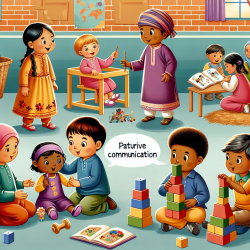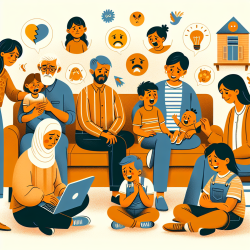Introduction
In the realm of special education and online therapy services, understanding diverse cultural perceptions and misconceptions about health issues like HIV/AIDS is crucial. A recent study titled "Thematic Analysis of Iranian Female Adolescents’ Perceptions About HIV/AIDS: A Qualitative Study" provides valuable insights into the beliefs and knowledge gaps among teenage girls in Iran regarding HIV/AIDS. This blog explores how practitioners can utilize these findings to enhance their skills and improve educational interventions.
Understanding the Study
The study conducted in Urmia, Iran, involved face-to-face interviews with fifty female adolescents. It aimed to evaluate common opinions and beliefs about HIV/AIDS among this demographic. The thematic analysis revealed that mothers and teachers were the primary sources of information for these teenagers. However, misconceptions were prevalent, such as the belief that HIV/AIDS is not a significant concern in Iran and that drug abuse is the primary mode of transmission.
Key Findings and Implications for Practitioners
The study highlighted several misconceptions and gaps in knowledge among Iranian teenage girls, including:
- A lack of awareness about sexual transmission as a significant mode of HIV spread.
- Misunderstandings about the risk factors and prevention methods, such as condom use and safe practices.
- A perception that HIV/AIDS is primarily a problem in other countries, not Iran.
For practitioners, these findings underscore the importance of culturally sensitive education programs. Here are some actionable steps to consider:
- Enhance Education Programs: Develop comprehensive education programs that address misconceptions and provide accurate information about HIV/AIDS transmission and prevention.
- Incorporate Life Skills Training: Integrate life skills training into school curricula to empower students with the knowledge and skills needed to make informed decisions.
- Utilize Diverse Information Sources: Encourage the use of multiple information sources, including media and healthcare professionals, to provide a well-rounded understanding of HIV/AIDS.
- Foster Open Communication: Create safe spaces for adolescents to discuss sensitive topics like HIV/AIDS without fear of stigma or judgment.
Encouraging Further Research
While this study provides a valuable foundation, further research is needed to explore the perceptions of different demographic groups and to develop targeted interventions. Practitioners are encouraged to engage in or support research initiatives that delve deeper into cultural beliefs and their impact on health education.
Conclusion
By implementing the findings from this thematic analysis, practitioners can enhance their skills and contribute to more effective HIV/AIDS education and prevention programs. Understanding and addressing cultural perceptions is key to reducing the risk of exposure and improving health outcomes.
To read the original research paper, please follow this link: Thematic Analysis of Iranian Female Adolescents’ Perceptions About HIV/AIDS: A Qualitative Study.










